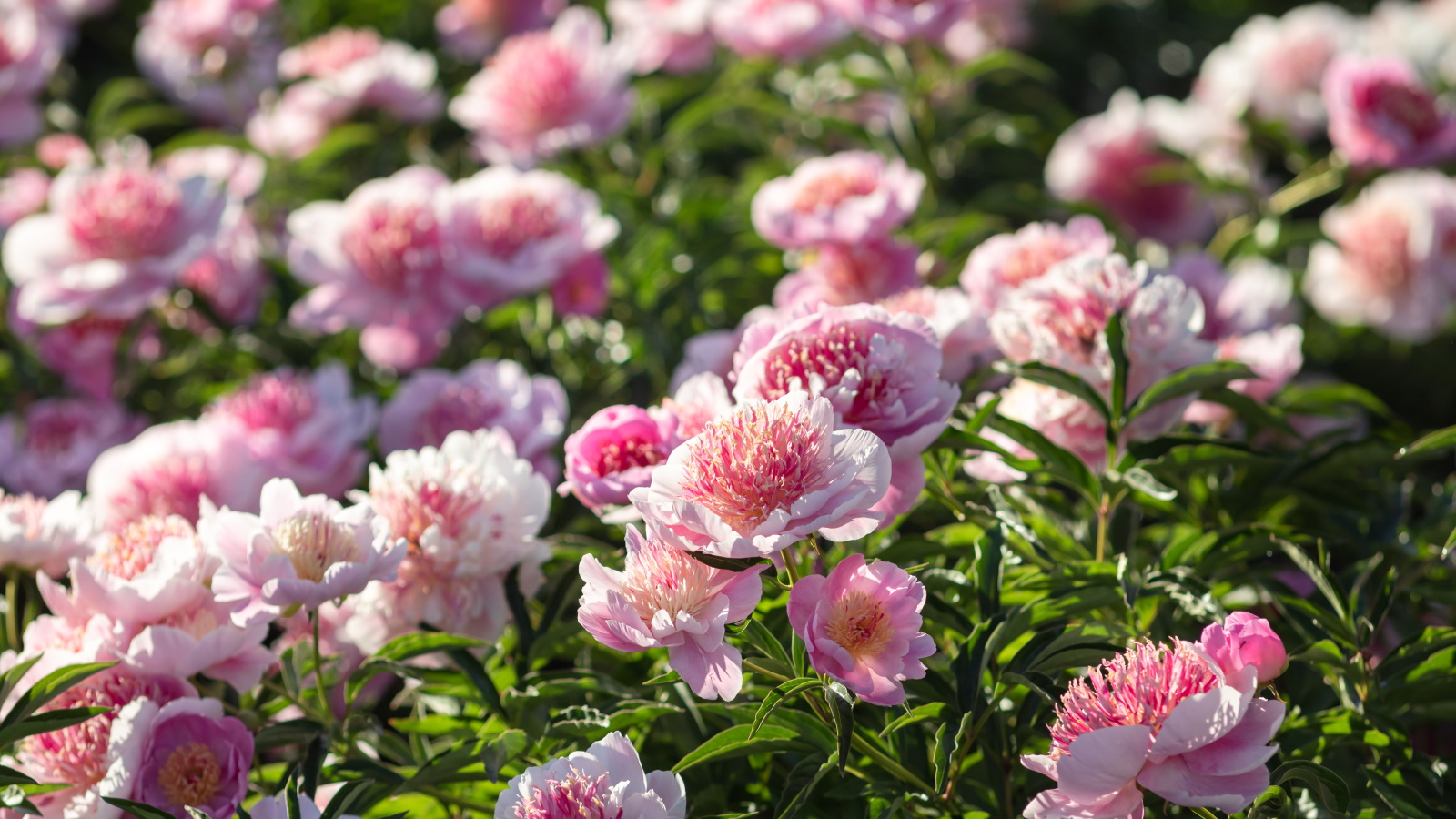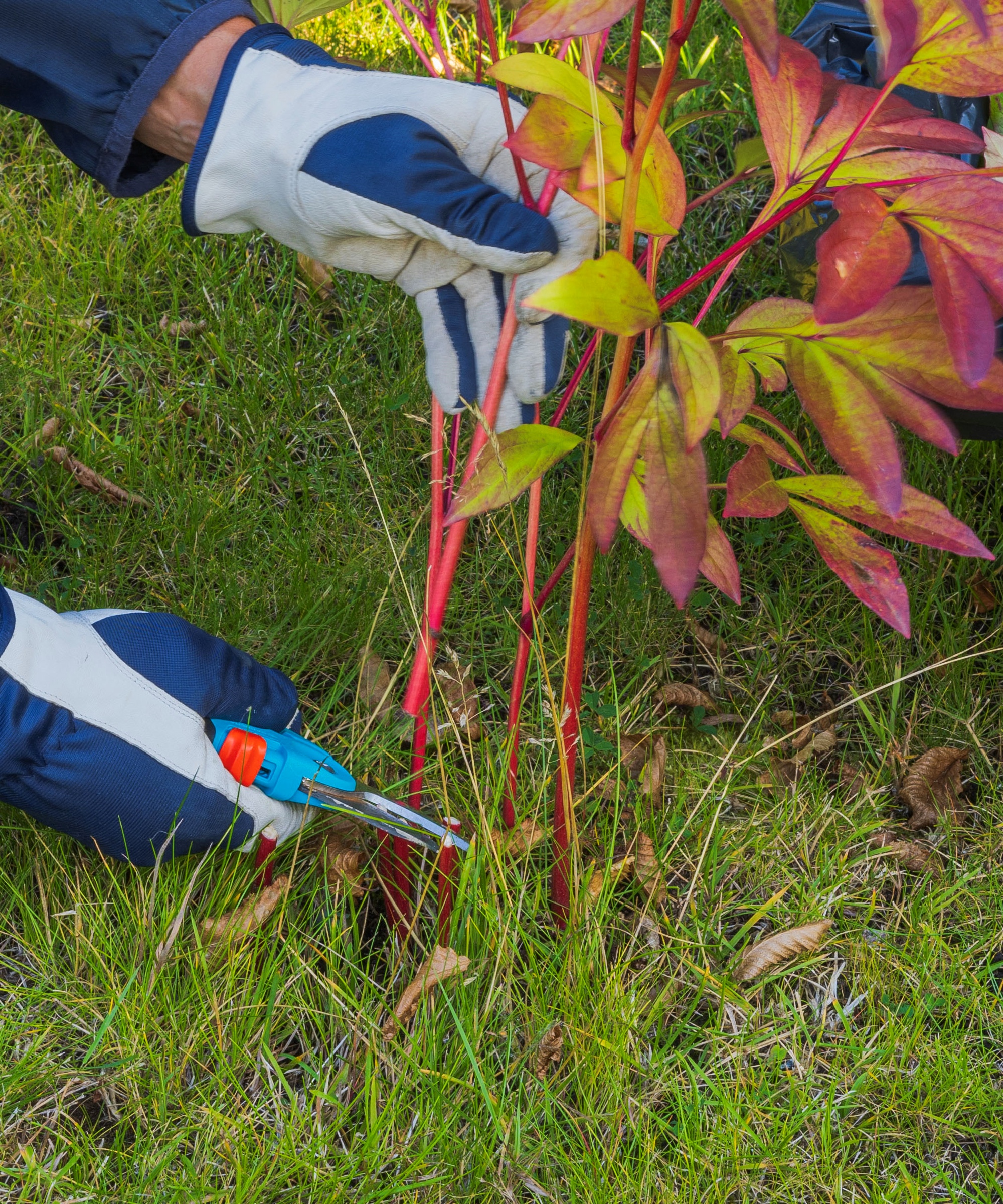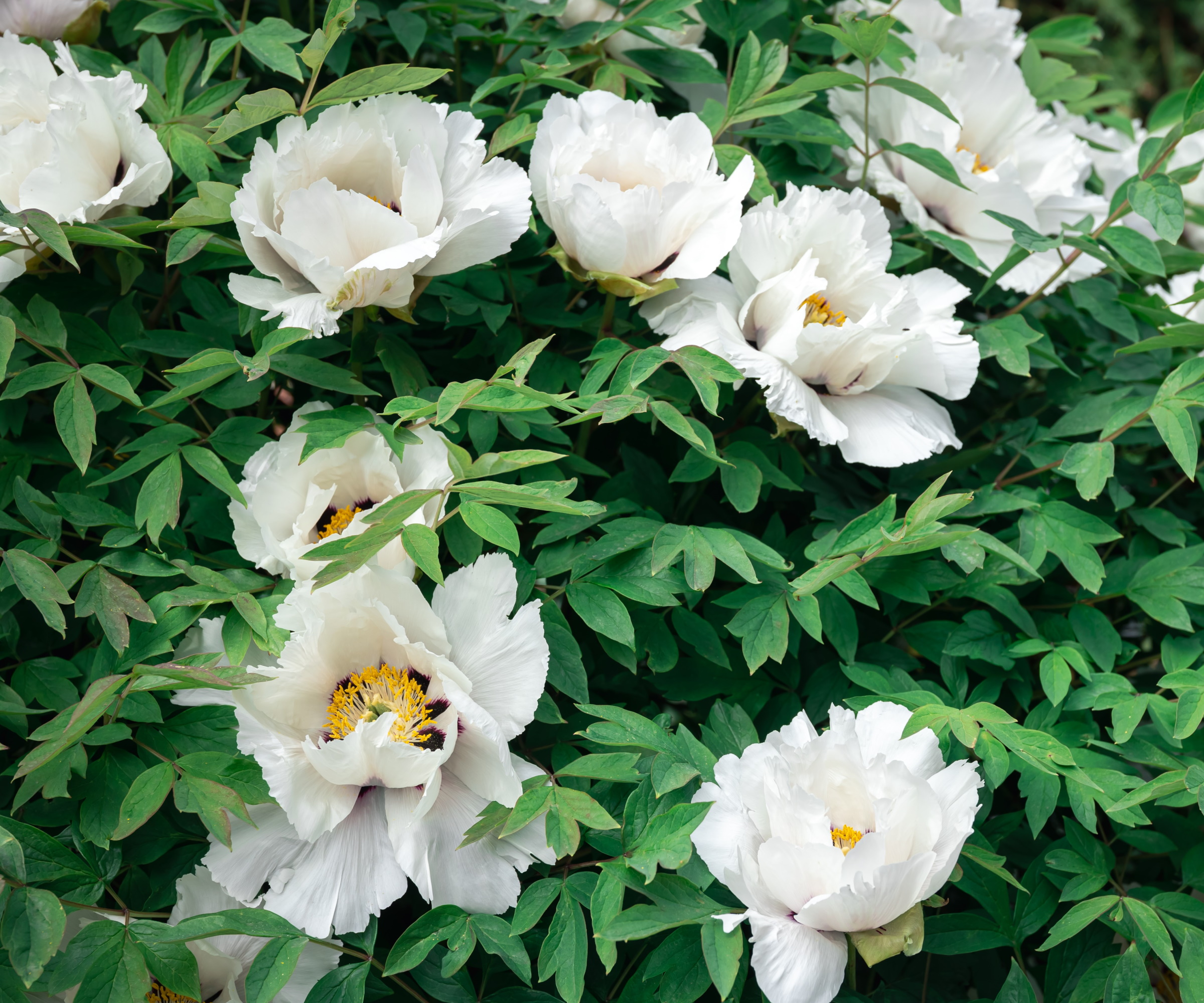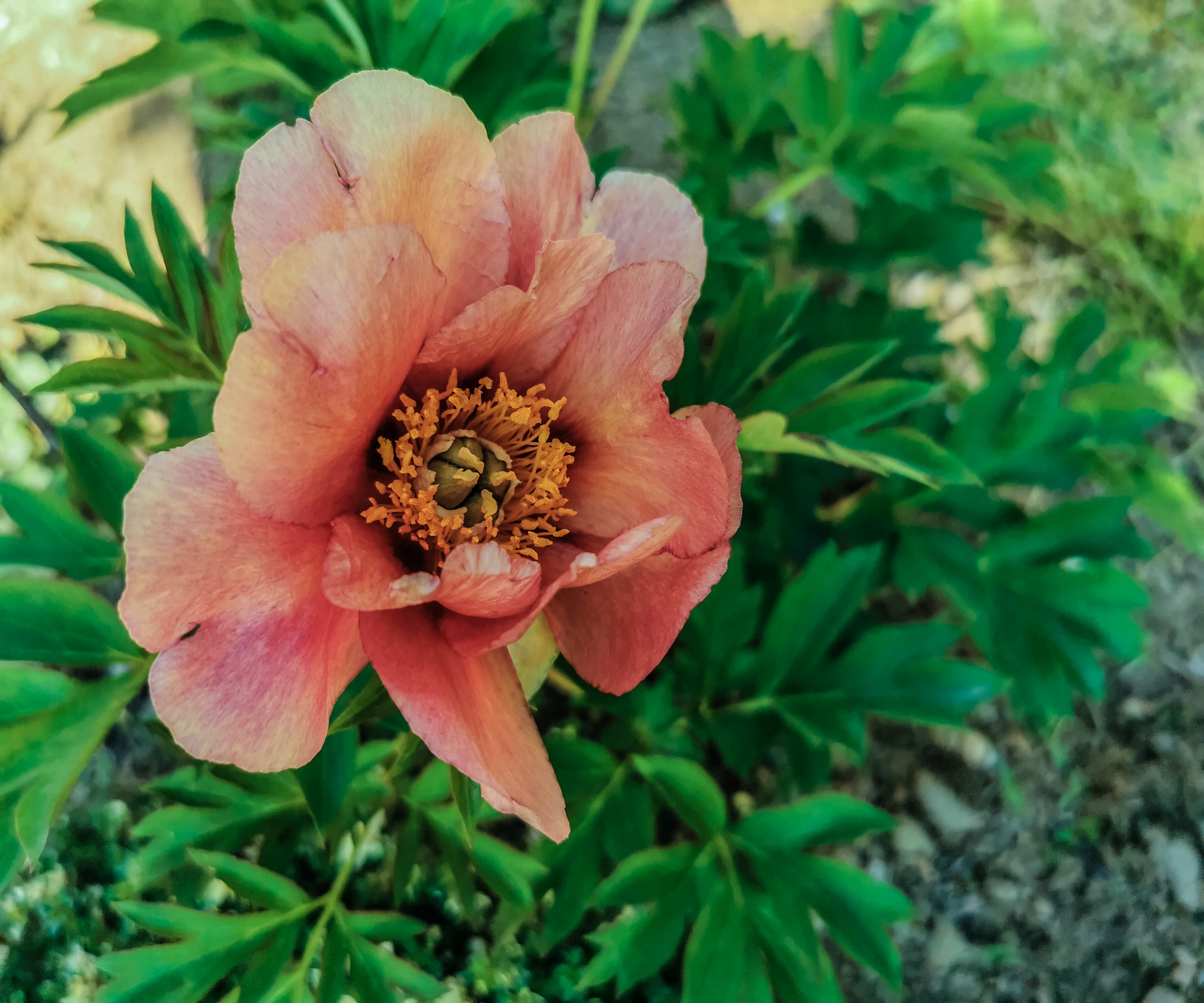
Peony blooms in our yards and gardens are a glorious, uplifting sight. As one of the most popular cut flowers worldwide, being able to grow peonies successfully is a real coup for the home gardener.
When it comes to properly caring for your peonies, it's vital to know which type of peony you grow, as this will dictate when and how it is pruned.
Avoid making these common peony pruning mistakes, and follow our expert advice for success with these floriferous plants.

How to prune peonies
The three types of peonies are herbaceous, tree and intersectional. You may have more than one, so discover how to treat each plant when it comes to pruning.
Pruning herbaceous peonies

Herbaceous peonies are one of the most popular and eye-catching perennials to grow.
These soft-stemmed varieties produce new shoots from the ground each spring and thrive in a sunny spot that has rich, free-draining soil that has a neutral pH or is slightly acidic. They do not enjoy waterlogged conditions.
Once the first frost has hit the garden, take a clean, sharp pair of secateurs, like these bestselling Fiskars Bypass Shears on Amazon, and cut the stems down to within 3in of the ground.
Remove and compost all the cut material so it can’t host any of the pests and problems that can affect peonies, then mulch around the roots with well-rotted manure or compost (homemade if possible).
Pruning tree peonies

Tree peonies are woody-stemmed shrubs that produce large bowl-shaped flowers. These are either single or double-petalled in colors ranging from purest white to deepest maroon.
The only pruning they need is cutting back flowered shoots to just above new growth when blooms have died. If you wish to collect seeds for propagation, do this in the fall.
If stems become leggy over time they can be cut back by a third in fall, after the leaves have fallen to encourage new bushy growth.
Pruning intersectional peonies

Intersectional peonies are hybrids, which is a cross between woody-stemmed tree peonies and soft-stemmed herbaceous peonies.
They are more expensive and less common than the other two varieties, but are treated like herbaceous peonies when it comes to pruning.
It isn't easy to make deadheading mistakes if you take care. Snip just below the blooms when they fade in summer and then in the fall, and cut the foliage right back as you would with herbaceous peonies.
Then mulch over the roots with a generous amount of well-rotted compost or manure.
These snips have a soft-grip handle, and are perfect for those smaller pruning jobs and cutting plants back throughout the summer.
FAQs
Can I grow peonies from seeds?
Yes, but it takes time. Harvest peony seeds when they are ripe (they turn dark blue/black), then sow them indoors them 1in deep in seed trays or in 5in pots of seed potting soil, like this mix by Seed Starter on Amazon, which contains all the nutrients seedlings need for healthy germination.
It is usual for a few seedlings to appear in the first year and more in the second and third years. Seeds germinate in one of two ways: epigeal, when cotyledons (seed leaves) appear above the soil before true leaves form, and hypogeal, when juvenile leaves appear first and cotyledons remain in the seed case. Leave plants in their containers for two years to establish a good root system before moving them to where you wish them to flower. Protect them from slugs and snails.
If you love growing flowers in your garden, discover some of the best ways to maximise blooms with our guides on what to do with foxgloves when they finish flowering, and how to grow lily of the valley.







